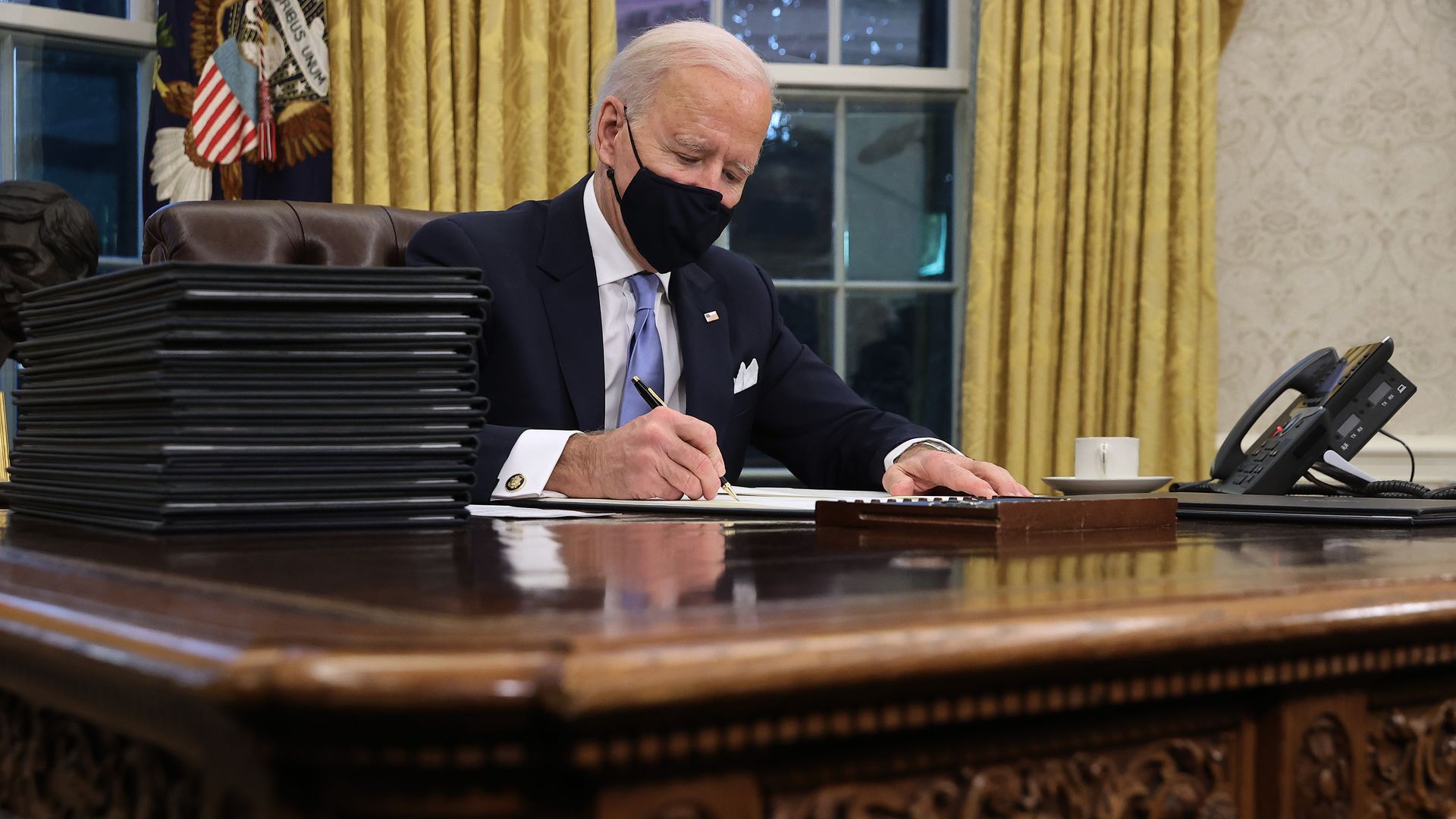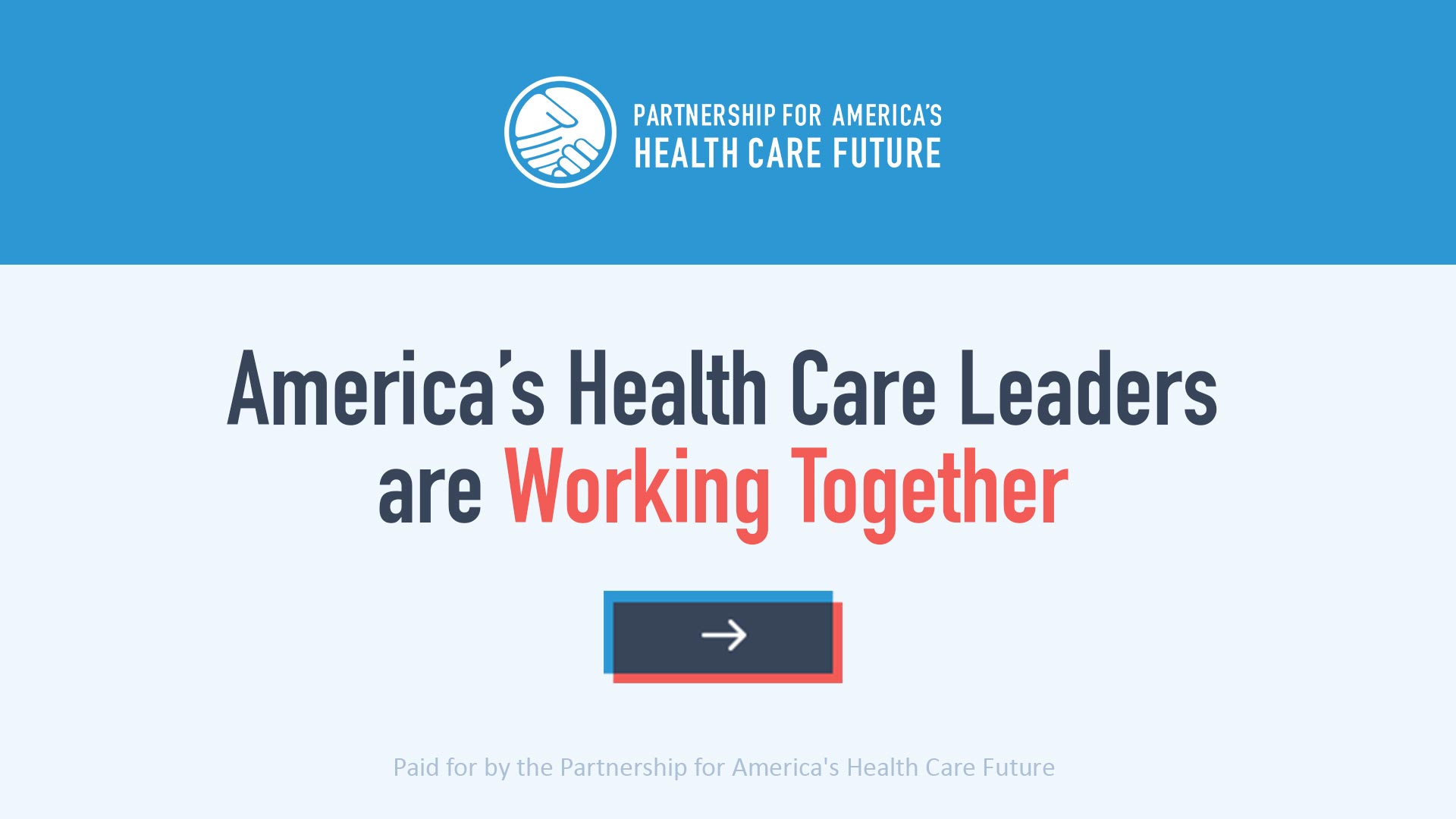| | | | | | | Presented By Partnership for America's Health Care Future | | | | Vitals | | By Caitlin Owens ·Jan 21, 2021 | | Good morning. Today's word count is 950, or a 4-minute read. | | | | | | 1 big thing: New coronavirus cases down, but more bad news ahead |  Data: The COVID Tracking Project, state health departments; Map: Andrew Witherspoon/Axios The pace of new coronavirus infections fell significantly over the past week, but the virus is still out of control, and a more contagious variant is gaining ground, Axios' Sam Baker and Andrew Witherspoon report. By the numbers: The U.S. averaged roughly 198,000 new cases per day in the final week of the Trump administration — a 19% drop from the week before, but still a ton of cases. - The number of new daily cases fell in 44 states, compared to the previous week. South Carolina and Virginia were the only states whose outbreaks got worse over the past week.
- The U.S. is now conducting almost 2 million tests a day, on average.
- Hospitalizations are generally holding steady. Roughly 123,000 people are in the hospital today for COVID-19 infections.
What's next: There's little reason to believe the U.S. is about to turn the corner on the pandemic, or that this one week of good news will make the Biden administration's job any easier. - 198,000 cases per day is a staggering number of cases — more than enough to continue overwhelming hospitals in some parts of the country.
- And experts say a more contagious variant of the coronavirus will soon become the dominant strain in the U.S., allowing the virus to spread even more easily.
As the winter surge peaks, "we may see 3–4 weeks of declines in new cases but then new variant will take over," former FDA commissioner Scott Gottlieb tweeted recently. "It'll double in prevalence about every week. It'll change the game and could mean we have persistent high infection through spring until we vaccinate enough people." |     | | | | | | 2. Biden to ramp up federal coronavirus response |  | | | President Biden signs executive orders only hours after being inaugurated. Photo: Chip Somodevilla/Getty Images | | | | On his first full day on the job, President Biden will move quickly to translate his promise of a stronger federal response to the pandemic into policy — starting with 10 executive orders and other directives. Why it matters: The hands-on federal effort marks a significant change from the Trump administration, which put states in charge of many of the logistical details of their pandemic responses. Details: Biden's executive actions will direct agencies to boost supply chains — including by using the Defense Production Act. - They'll also establish a federal board to increase coronavirus testing capacity and access, establish an equity task force, and order the Departments of Education and Health and Human Services to provide guidance on how to safely reopen schools.
The big picture: The new administration is taking steps that public experts have been calling for. - But putting the pandemic behind us would require a lot of cooperation from the public, and it's far from clear that Biden will have that, no matter what he does.
Between the lines: Almost nothing will be as important — or high-pressure — as the vaccination effort. - Biden wants to increase the number of vaccination sites, expand the supply of doses and ask states to expand eligibility for vaccinations.
- But the Trump administration had already begun sending out most available vaccine doses to states, meaning there's no quick way to boost the supply in the immediate term.
- In many states, demand is simply overwhelming supply.
|     | | | | | | 3. Racial disparities in mortality aren't improving |  Racial disparities in mortality haven't budged, despite an increasing awareness of the problem and a focus on social determinants of health, according to a new report published in JAMA. The big picture: Black mortality remains far higher than white mortality in America's 30 largest cities, according to the study, Axios' Marisa Fernandez reports. By the numbers: Nationwide, Black Americans' mortality rate was 24% higher than white Americans' between 2016 and 2018. That translates to about 74,402 excess Black deaths. - Washington, D.C. had the biggest disparity, with a death rate for Black residents more than twice as high as the white mortality rate.
The bottom line: The pandemic has highlighted the stark racial inequities in the U.S. health care system and the American economy, but it didn't create them. These disparities are deeply entrenched, and in the country's biggest cities, they're not getting any better. |     | | | | | | A message from Partnership for America's Health Care Future | | America's health care leaders are working together | | |  | | | | America's health care leaders are working together by expanding access to coverage and care, improving quality of care, strengthening the coverage millions rely on, protecting America's most vulnerable and preserving patient control. | | | | | | 4. Fighting COVID-19's effects on gender equality | | Women around the world have borne a disproportionate brunt of the social and economic effects of COVID-19, Axios' Bryan Walsh reports. Why it matters: Women in the U.S. and around the world already faced an unequal playing field before the pandemic. As countries prepare for the post-COVID-19 world, they need to take special care to ensure the virus doesn't permanently set back the cause of gender equality. What's happening: The Center for Global Development (CGD), a think tank that focuses on poverty and inequality, is launching the COVID-19 Gender and Development Initiative, which will seek to fill in data gaps about the gendered effects of the pandemic. By the numbers: The early indications are dire. - Data from 26,000 businesses collected across 50 countries shows women were more likely to close their businesses than men because of the pandemic and consequent social distancing policies.
- Female wage workers have been disproportionately forced into the informal sector or have been thrown out of work altogether.
- According to the Ludwig Institute for Shared Economic Prosperity's "true unemployment" metric, 30.9% of American women were unemployed as of November — an increase from October, even as the overall unemployment rate fell.
The disproportionate effects of containment measures on female-dominant sectors, the heavier role of women in child and elder care, and an uptick in domestic violence are all behind COVID-19's female recession, according to Megan O'Donnell, CGD's deputy director for gender. |     | | | | | | 5. Catch up quick |  | | | Illustration: Aïda Amer/Axios | | | | Amazon's worldwide consumer CEO Dave Clark has offered to help the Biden administration with its coronavirus vaccination goals by mobilizing efforts to inoculate its employees, according to a letter sent to President Biden on Wednesday. More than a dozen states are running low on vaccine doses, prompting some to scale back eligibility or refrain from expanding it, Politico reports. Some new coronavirus variants "may pose unexpected challenges to the immune system, even in those who have been vaccinated," NYT reports. On the other hand, the Pfizer-BioNTech appears to work equally as well against the variant of the virus first found in the U.K. as it does against earlier versions, the companies reported yesterday, per STAT. |     | | | | | | A message from Partnership for America's Health Care Future | | America's health care leaders are working together | | |  | | | | When it comes to what's next in health care, let's commit to working together to help Americans get healthy and stay healthy, and build on and improve what's working to ensure everyone has access to affordable, high-quality health coverage and care. | | | | | | Axios thanks our partners for supporting our newsletters.
Sponsorship has no influence on editorial content. Axios, 3100 Clarendon Blvd, Suite 1300, Arlington VA 22201 | | | You received this email because you signed up for newsletters from Axios.
Change your preferences or unsubscribe here. | | | Was this email forwarded to you?
Sign up now to get Axios in your inbox. | | | | Follow Axios on social media:    | | | | | |
Post a Comment
0Comments